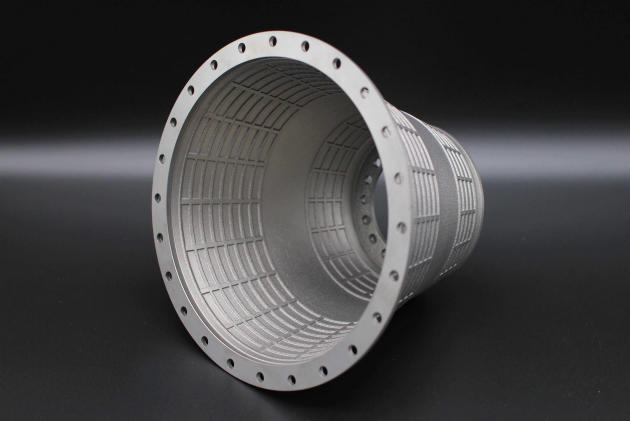High-quality spherical metal powder is an important guarantee for high-performance metal additive manufacturing. Its composition, oxygen content and powder physical properties (morphology, particle size distribution, powder fluidity, loose density, etc.) have an impact on the stability and manufacturing process of 3D printing. The physical and chemical performance of the parts is very important, which affects and determines whether the product can be installed and applied.

Among the many technical indicators of powder, the sphericity of the powder and the ratio of satellite spheres directly affect the fluidity and bulk density of the powder. Low powder sphericity or too high proportion of satellite spheres will directly affect the powder feeding or spreading quality, which in turn affects the quality of printed parts, and produces internal and surface defects. In recent years, with the increasing maturity of additive manufacturing technology, the demand for efficient forming of complex components and large parts has become higher and higher. Smart additive manufacturing factories have also emerged, but they are limited by the bottom-mounted powder supply mode in equipment operation. In the process, it is impossible to add powder online, and the opening and adding powder is prone to step connection and metallurgical defects. Therefore, the international mainstream large-size equipment usually adopts the continuous powder feeding system of the upper feeding type. The upper powder feeding method has higher requirements on the fluidity of the powder.
If the powder fluidity is not good, the powder will fall unevenly, or there will be agglomeration or unevenness in the powder spreading process, which will adversely affect the print quality. In the future, the demand for high fluidity powders in metal additive manufacturing will become more and more prominent.
Aluminum alloy powder is not easy to obtain high fluidity due to its light density, and the morphology control of the preparation of aluminum alloy powder is more difficult than other alloy materials, so that for a long period of time, the aluminum alloy powder used for 3D printing only has an angle of repose. Evaluate powder fluidity, but can not be directly measured with a Hall flow meter. At present, high-fluidity aluminum-based alloy powder materials (AlSi10Mg, etc.) have been used in batches in aerospace, automotive transportation and other fields, and the powder product characteristics and printed parts have good performance. The 3D printed test block was prepared with high-fluidity AlSi10Mg powder, and small pores were occasionally seen in the horizontal and vertical surfaces of the metallographic form, and there were no large pores.
About KMPASS
KMPASS is a trusted global chemical material supplier & manufacturer with over 12 years experience in providing super high-quality chemicals and Nanomaterials. The company export to many countries, such as USA, Canada, Europe, UAE, South Africa, Tanzania, Kenya,Egypt,Nigeria,Cameroon,Uganda,Turkey,Mexico,Azerbaijan,Belgium,Cyprus,Czech Republic,Brazil, Chile, Argentina, Dubai, Japan, Korea, Vietnam, Thailand, Malaysia, Indonesia, Australia,Germany, France, Italy, Portugal etc. As a leading nanotechnology development manufacturer, KMPASS dominates the market. Our professional work team provides perfect solutions to help improve the efficiency of various industries, create value, and easily cope with various challenges. If you are looking for AlSi10Mg powder, please send an email to: sales2@nanotrun.com



